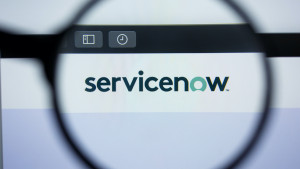- June 13, 2023
- Adam Mansfield
- Reading Time: 7 minutes

Are you considering becoming a new ServiceNow customer or do you have a ServiceNow renewal coming up? Beyond just getting the best ServiceNow pricing and discounting, you will also want to ensure your ServiceNow negotiation results in a subscription agreement and Order Forms that provide transparency, proper price protections and flexibility to remove downstream cost exposure while also meeting your company’s evolving needs. These ServiceNow negotiation tips can help you get more from your ServiceNow relationship.
Understand What ServiceNow Wants from Their Customers
You have a much better chance of getting what you want in a negotiation if you understand what the person (or company) on the other side of the table wants. Like most cloud vendors, ServiceNow ultimately needs to land and expand. Here are some of the areas they are most focused on:
-
$1M in Annual Contract Value
ServiceNow now has almost 1700 customers with annual spends greater than $1M. The average spend in that group is $4.2M. One way ServiceNow can increase that number is by pushing customers to the most robust product offerings. This allows ServiceNow to quickly increase the valuable average revenue per user (ARPU) and thus the annual contract value without a need for the customer to increase volumes. ServiceNow can also apply price increases at renewal to accomplish this goal.
-
Multiple Product and Workflow Adoption
ServiceNow knows that it’s even harder for customers to walk away when multiple parts of the business are relying on their products. They also know that the more products adopted, the more likely they can keep competitors out. ServiceNow’s ability to sell a wide set of products from as many of their Workflows as possible will prove critical to locking customers into their solutions. It is also important to ServiceNow to gain adoption of their Industry solutions because Industry SKUs come with a higher average selling price (around 30-40% higher).
-
More Robust Product Adoption (Pro/Enterprise)
Moving customers to more robust editions is a very fast way for ServiceNow to increase the ARPU. One particular product that ServiceNow is focused on is their core product – ITSM. ServiceNow knows that there is a 25% price uplift that comes with moving customers from the ITSM Standard SKU to the Pro/Enterprise SKU. Increased adoption of robust product editions also demonstrates that customers are interested in using ServiceNow’s embedded new features, including AI and machine learning capabilities that are not found in standard editions.
-
IT and Business Executive Attention
In order to become a true strategic partner and to drive customers to adopt more of what ServiceNow has to offer, ServiceNow knows they must get an audience with the C-Suite, including IT and Line of Business Executives. In the past, ServiceNow was focused on selling solely to the IT department, but now the buy centers have evolved, and they have started to focus on getting attention from Chief Information Security Officers, Chief Human Resources Officers, and Chief Customer Officers as well as executives from departments like Legal and Procurement.
Understanding what ServiceNow wants from you can help you put the right information forward to influence their proposals and land on an agreement that works for both parties.
Take Stock of Your Utilization Since Your Last ServiceNow Negotiation
Many organizations already know there is some degree of unused products or product features in their portfolio without even doing a deep dive. But having a high-level view of your utilization and the value received to date is simply not enough.
For underutilization to be a useful lever during your negotiation, you must have a granular understanding of the specific products and features you are either not using currently or will most likely not use in the future. This becomes incredibly valuable if you consider, for example, jumping to ITSM Pro and realize that standard edition may be enough because you would not realize the full value from the additional features of the Pro version.
Raising the issue of underutilization and lack of expected value is not going to get you a credit or a refund. However, if done appropriately and with the right stagecraft, it can help you gain negotiation leverage for improved pricing moving forward or even deeper discounting on any new products ServiceNow now wants you to adopt. You can also position the need for ServiceNow to step up and provide investments in the form of service credits or funding to help unlock value moving forward.
Also, while it may be the case that you are partially to blame for low usage, ask yourself what ServiceNow did to help drive utilization. How often did they check in, bring resources, and create workshops to help you receive value from what they sold you? This is especially important when your underutilization is tied to a product that they heavily pushed on you at your last renewal.
Develop Your ServiceNow Negotiation Roadmap
As part of your roadmap work, you need to look at what products and features you immediately need as well as those you envision needing in the future. ServiceNow doesn’t want to simply participate in your roadmap discussions – they want to drive these discussions. They will likely show their understanding of your needs and will focus on where they want you to go, such as adopting additional products.
ServiceNow often partners with big industry leading IT services firms like IBM, Deloitte and Accenture so they can come to you with a unified approach that drives the message of why you need to adopt more. They lean heavily on the partner ecosystem to help drive adoption and penetration in organizations. ServiceNow will continue to build out and expand its go-to-market strategies with these service providers.
You need to take control of these discussions and have ServiceNow appropriately focus on tying their proposed solution to real value that aligns with your needs. Having a detailed and realistic ServiceNow roadmap is critical to driving more valuable discussions and efficient negotiations. Once you have this, you can start to shift the burden to ServiceNow to sell you what you need, rather than what they want you to adopt.
Having a well-defined roadmap that is presented to ServiceNow also helps show them that there is a long-term vision and opportunity. Also, when you are looking for price commitments for some of the future products you are not ready to adopt, you will have a better opportunity to obtain those commitments if ServiceNow does not perceive the ‘ask’ as one driven purely by procurement, but rather coming from the business or stakeholders.
Beware of Product Changes Since Your Last ServiceNow Negotiation
Like with all cloud and software vendors, product changes are going to happen. For ServiceNow, some of the more recent and noteworthy changes include GRC becoming IRM and ITBM becoming SPM.
Beware that these product changes can cause you to lose previously negotiated commitments because of no longer meeting specific conditions. The best example would be that renewal price protections require the same products to be renewed or for the product to still be commercially available.
When ServiceNow gets rid of a protected product, those price protections go away. Not only are you susceptible to likely increased pricing from such product changes, but you are also now completely exposed to further price increases at renewal.
Assess Your Current Contract
If you’re heading into a renewal negotiation, it is critical to know how competitive your current ServiceNow agreement is. The goal isn’t to change the past but to use this information to ensure that the deal you are about to get is now an appropriate one moving forward.
Presenting ServiceNow with the understanding you now have and shaping your discussions with them in a more informed manner is always impactful when pushing for the right deal moving forward.
There are many commercial terms and aspects of the contractual relationship that you must get right. To ensure these terms make it properly into your subscription agreement as well as the associated order form, I recommend initially focusing on the following key items:
-
Pricing and Discounting
Obtaining unbiased, fact-based, and relevant ServiceNow pricing benchmarks can help you understand whether your current product pricing and discounting is competitive in relation to the market and similar customer scenarios.
-
Volume Discount Structure
Do you have commitments that your pricing will go down as your user volume or license metric grows? Unfortunately, this is something that requires an orchestrated negotiation armed with insights into forecasted growth because many cloud subscriptions don’t provide it. Having a negotiated and meaningful volume discount structure included in your cloud subscription agreement will convert your transactional relationship into one that is more strategic.
-
Renewal Price Protections
Obtaining price protections is critical. ServiceNow does not have a standard provision in place in their master subscription agreement, so you are completely exposed to costly downstream price increases that are often significant. You will need to get this adequately addressed and included as part of your contractual relationship moving forward. Having a renewal price protection at all is good, but we often see that the negotiated price cap is too high or that there are far too many conditions found in the fine print that remove the provision you thought you had.
-
Current and Future Product Price Protections
Did you obtain price protections for volume tied to currently subscribed products added in-term or for future products added in-term? If you know a product is part of your roadmap but you can’t include it in the deal or order form now, you should still push to get price commitments today. The more you can show your roadmap is real, the more likely this type of concession can be obtained from ServiceNow.
-
Swap Rights
A lot of organizations had subscribed to products and features that they are simply not using, or they had made volume commitments beyond what turned out to be needed. Ask ServiceNow for the flexibility to swap products and/or unused volume for other products you could use, or for more volume tied to other products you are also subscribed to.
Perhaps you have some or many of these items addressed in your current ServiceNow subscription agreement or order form. The question then becomes, do you have the right level of commitment relative to each of these? Did you leave anything on the table and is there further room to improve as part of your upcoming renewal negotiation?
Establish Internal Alignment Ahead of your ServiceNow Negotiation
If there is not internal alignment around the strategy and approach for your ServiceNow negotiation, it can crater much of your negotiation efforts. This will undoubtedly result in a subpar deal that does not address the needs and concerns of your company.
By presenting to your company’s key players your granular usage, determined roadmap and an assessment of your current contract, you can usually gain internal alignment quickly to ensure you get the best deal possible. They understand that the upcoming negotiation is the time to improve and optimize the go-forward ServiceNow relationship and know they will have a critical part in whether that happens or not.
Gaining internal alignment should help ensure that a unified message is communicated to ServiceNow. ServiceNow will understand that all asks for concessions or improvements to the deal are not tied simply to a procurement exercise – they are collective asks from your company.
Preparation is Key Before Your ServiceNow Negotiation
To establish a more strategic relationship and partnership with ServiceNow, you must take the time to develop your roadmap, identify areas for improvement, and create a ServiceNow negotiation strategy that takes the present and future into account.
An ideal time to start preparing a comprehensive negotiation strategy is 6-9 months prior to your discussions, with many customers taking a full year to orchestrate the preparation and execution phases of the negotiation most effectively.
Our ServiceNow expert advisors can help you create a comprehensive negotiation strategy to ensure you and your company are not leaving anything on the table with ServiceNow. Check out our ServiceNow advisory services to learn more.
Related Blogs
ServiceNow’s GenAI Push: What Customers Need to Know About the Costly “Pro Plus” Add-On
8 Tips for Making the Most of ServiceNow Knowledge 2023
ServiceNow’s Year-End Goals: What Customers Need to Know
About the Author

